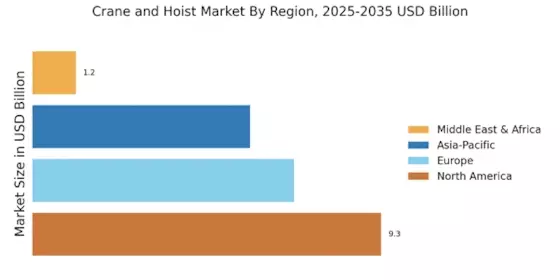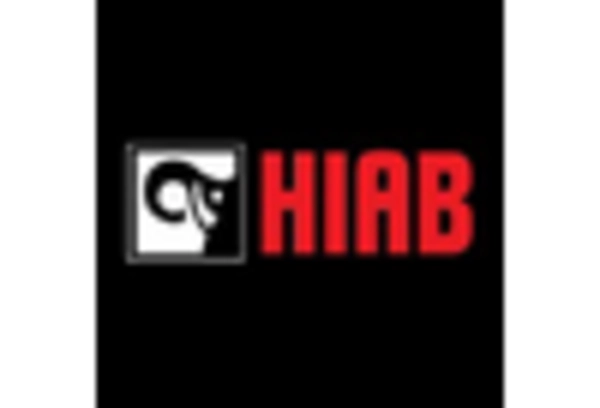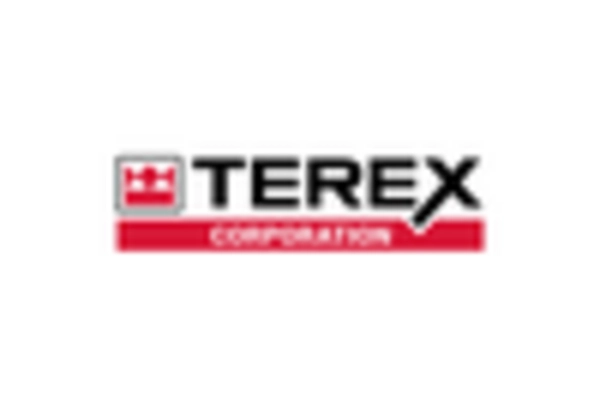Technological Innovations
Technological innovations are reshaping the Crane and Hoist Market, as manufacturers strive to enhance the efficiency and functionality of their products. The integration of smart technologies, such as IoT and AI, is enabling real-time monitoring and predictive maintenance of cranes and hoists. This trend is likely to improve operational efficiency and reduce downtime, which is crucial for industries reliant on heavy lifting equipment. Furthermore, advancements in materials and design are leading to lighter, more durable cranes and hoists, which can operate in a wider range of environments. As these innovations continue to emerge, they are expected to drive growth within the Crane and Hoist Market, attracting investments and fostering competition.
Focus on Safety Regulations
The Crane and Hoist Market is increasingly influenced by stringent safety regulations imposed across various sectors. Governments and regulatory bodies are emphasizing the importance of safety in material handling operations, leading to the adoption of advanced crane and hoist systems that comply with these regulations. Companies are investing in equipment that not only meets safety standards but also enhances operational reliability. This focus on safety is likely to drive innovation within the Crane and Hoist Market, as manufacturers develop solutions that incorporate safety features such as overload protection and automated shut-off systems. As a result, the market is expected to witness a shift towards safer, more reliable lifting equipment.
Rising Demand in Manufacturing
The manufacturing sector is a pivotal driver for the Crane and Hoist Market, as it increasingly relies on automated solutions to enhance productivity. With the global manufacturing output anticipated to reach USD 40 trillion by 2025, the need for efficient material handling equipment is paramount. Cranes and hoists play a crucial role in streamlining operations, particularly in heavy industries such as automotive and aerospace. The integration of advanced technologies, such as IoT and AI, into crane systems is likely to further elevate their utility in manufacturing settings. This trend suggests a robust growth trajectory for the Crane and Hoist Market, as manufacturers prioritize efficiency and safety in their operations.
Increased Construction Activities
The Crane and Hoist Market is experiencing a surge in demand due to heightened construction activities across various sectors. Urbanization and infrastructure development projects are driving the need for efficient lifting solutions. For instance, the construction sector is projected to grow at a compound annual growth rate of approximately 5.5% over the next few years. This growth is likely to necessitate the deployment of cranes and hoists to facilitate the movement of heavy materials, thereby enhancing operational efficiency. As construction companies seek to optimize their workflows, the adoption of advanced crane and hoist systems becomes imperative. Consequently, this trend is expected to bolster the Crane and Hoist Market significantly.
Expansion of Logistics and Warehousing
The logistics and warehousing sector is witnessing rapid expansion, which is significantly influencing the Crane and Hoist Market. As e-commerce continues to flourish, the demand for efficient material handling solutions is on the rise. The warehousing market is projected to grow at a CAGR of around 8% over the next five years, necessitating the use of cranes and hoists for the efficient movement of goods. This growth is likely to drive investments in advanced lifting equipment, as companies seek to optimize their supply chain operations. The integration of automated cranes and hoists into warehousing facilities is expected to enhance operational efficiency, thereby propelling the Crane and Hoist Market forward.



















Leave a Comment